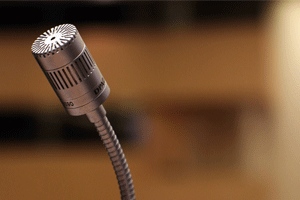The first bellwether trial in the Bard PowerPort multidistrict litigation (MDL No. 23-3081) has been scheduled. U.S. District Judge David G. Campbell selected Robert Cook v. C.R. Bard as the initial trial, with a case management conference set for August 15 in the District of Arizona.
The MDL includes over 1,400 lawsuits alleging that Bard’s implantable port catheter devices are prone to fracture, infection, and thrombosis due to a flawed design—specifically, the use of barium sulfate, which may degrade catheter integrity. Plaintiffs report serious complications including cardiac tamponade, sepsis, and the need for surgical removal.
Judge Campbell selected six representative cases—covering infection, thrombus, and fracture claims—to serve as bellwethers. The lawsuits also allege Bard misrepresented device safety and concealed adverse event reports through the FDA’s former Alternative Summary Reporting program.
With more than 300,000 port implants performed annually and Bard holding a majority market share, the outcome of these trials will be closely watched.
On May 24, 2023, plaintiffs filed a Motion to Transfer Actions with the U.S. Judicial Panel on Multidistrict Litigation (JPML) against C.R. Bard Inc., a wholly owned subsidiary of Becton Dickinson and Company, the designer, manufacturer and seller of implanted port products, specifically the Bard PowerPort.
The Bard PowerPort is a device placed below the skin to provide a catheter port for the delivery of fluids, nutrition or medications. The FDA approved the first Bard device, the Implanted Titanium Port with 8 Fr. Chronoflex Catheter, in 2006. The port consists of two main elements: an injection port and a polyurethane catheter and was designed to withstand higher injection pressures. The needle delivering medication or fluids is inserted into the implanted port at which point the fluids travel through a thin tube known as the catheter and are delivered into the patient’s bloodstream. Use of the port allows a patient to receive repeated injections without requiring needle insertion of the IV for every injection. The polyurethane catheter in the Bard port is often made of “Chronoflex”, a mixture of polyurethane and barium sulfate. Plaintiffs allege that Chronoflex is more likely to break down, resulting in catheter fracturing or migrating that can lead to severe infections or sepsis, blood clots, cardiac punctures, vascular damage and other life-threatening injuries. To date there has been no recall issued by the FDA.
Lawsuits have been filed in the U.S. District Court for the Southern District of Iowa, the Superior Court of New Jersey, the U.S. District Court for the Western District of Missouri, the U.S. District Court for the Eastern District of Missouri and the U.S. District Court for the District of New Jersey. Plaintiffs allege that Bard’s implanted port catheter devices have dangerous design defects about which neither the patients nor medical providers were appropriately warned. In their Motion to Transfer, plaintiffs further argue that “the Defendants concealed known device failures and injuries from medical professionals and patients through submission to the FDA’s controversial Alternative Summary Reporting (“ASR”) program”, a program that permitted manufacturers to “request exemptions, variances or alternatives to reporting requirements.” Plaintiffs also note that “the ubiquity of implanted port implantations in the United States, coupled with the high complication rate and the outsized market share of the Defendants, could feasibly culminate in the filing of related actions in the tens of thousands.”
The motion was argued before the J.P.M.L. on July 27, 2023 and the order was signed on August 8, 2023 transferring the 10 actions currently filed to the U.S. District Court for the District of Arizona, one of the venues suggested by the defendant. The Court selected the venue in part because Bard represented that its affiliated company, Bard Access Systems has a significant business presence in the district and relevant witnesses would be located there. Moreover, a constituent action has already been filed in the District of Arizona. Plaintiffs had suggested consolidation in the Western District of Missouri where some of the cases are already filed. The manufacturer, while resisting the consolidation had suggested Utah or Arizona as possible venues.
Verus provides litigation support for medical device cases, from intake through resolution.
Contact us to learn how we can help streamline your case management.







